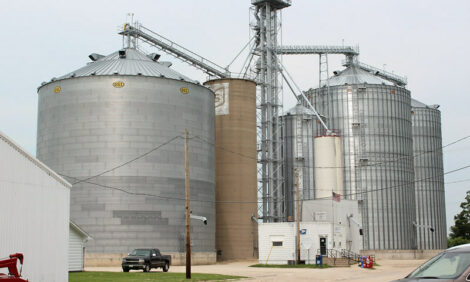



Australia a global leader in sustainable beef production

Australia's position as one of the world’s foremost innovators in agriculture and the growing sustainability of the nation’s beef value chain was in focus at the launch of the Australian Beef Sustainability Framework (ABSF) 2022 Annual Update in Sydney, according to a Meat & Livestock Australia news release.
The annual update serves as a yearly scorecard for industry by reporting against key indicators spanning environmental stewardship, animal care and wellbeing, economic resilience, and people and the community. This year’s report marked the fifth of its type since the launch of the ABSF in 2017 to identify success, opportunity and areas for improvement in the sustainable production of beef.
ABSF chairman Mark Davie said the annual update provided an imperative, transparent report card of industry’s sustainability performance and its commitment to providing consumers with ethically produced, premium beef they felt good about eating.
“Working collaboratively within industry and with our customers and investors, the annual update provides a clear snapshot of where our industry is positioned in the areas we care most about and includes 53 indicators of sustainability spanning the wellbeing of animals, people, communities and the planet,” Davie said.
“Since its launch five years ago, this annual update has become a powerful aide in both identifying where we are performing well and where there are opportunities to improve, and shows we are serious about being accountable not only for our successes but for out impacts," he said.
A key finding from this year’s report included 2.39 million tonnes of food waste being recovered along the value chain in 2021, diverting the matter from landfill.
“This is an excellent step forward as reducing waste will also reduce greenhouse gas emissions per kilogram of beef produced,” Davie said.
Australian beef producers have also embraced sustainable practices, with 35% of the industry using pain relief for invasive husbandry practices – representing a 5% lift compared to last year’s report.
“While there is still work to be done, this is a positive trend for the industry to reach its goal of 100% use of pain relief by 2030,” Davie said.
“Prioritising the welfare of animals through pain relief, across the full scope of the supply chain, is not only paramount to the trust industry shares with customers and communities, it also demonstrates the sector’s commitment to the improved care of animals, and will be a differentiator of Australian beef in global markets," he added.
This year’s annual update also reported there had been a 58.21% reduction in the emission of CO2 since 2005, as industry works towards achieving its self-determined goal of carbon neutrality by 2030.
“Through the CN30 initiative, our industry defined a problem and set about investing in research and development to address the challenge, informed by drivers of industry productivity and cost," said Davie. "Because of this initiative we are now leading the global narrative on emissions reduction and making on-farm and in-business changes to achieve our target."
Grazing land is also in good shape, with the annual update showing 79.6% of Natural Resource Management (NRM) regions achieved healthy ground cover thresholds in 2021 (as measured in September in the late dry season) – a key indicator of land condition.
Davie said graziers and beef producers had prioritised the health of their land after years of unprecedented drought.
“Sustainable grazing practices which support livestock businesses to improve productivity through feedbase management are a high priority across all regions. Technology advancements are supporting producers to measure their feedbases more accurately and make more informed decisions for the benefit of their land,” he said.
“However, this is also a space where we would like to see more work done, as connectivity and interpretation of data are some of the barriers preventing landholders from further adoption of practices to promote ground cover and biodiversity," he added.
Davie said the 2022 ABSF update gave him confidence the industry was standing true to commitment to continual improvement and an open dialogue with its customers and consumers.
“Australia has a critical role in rising to the challenge of feeding a growing global population, and the ABSF is a key tool to ensure we can deliver high-quality beef that is powerfully nutritious and sustainably produced,” he concluded.
TheCattleSite News Desk


